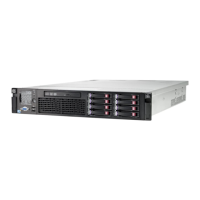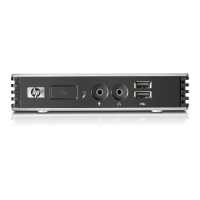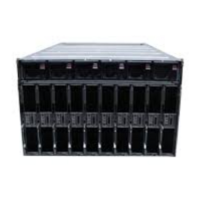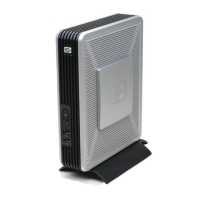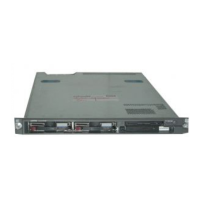NOTE: In the standard boot process, shown in Table 36 (page 88), even though the iLO MP is
running while the system is shut down (power LED is steady amber), it does not drive the system
health LED to steady green until +12 V DC power from the Bulk Power Supplies is applied.
The following list itemizes the steps that characterize basic platform boot flow. Step numbers
provided correspond to the steps in Table 36 (page 88).
3. System power switch turns on bulk power supplies and fans, and releases RESET on all processors
simultaneously, when toggled on.
5. Initial processor firmware code fetch is PAL code from EEPROM in PDH, retrieved 4 bytes at a
time by DMDC in ICH10 (No shared memory or I/O devices are available at this time; for example
they are not initially configured).
5. Firmware code stack is initially in BBRAM in PDH, retrieved 4 byes at a time, through PDH and
DMD buses.
5. PAL code configures all processors.
5. SAL code configures all platform ICH10 chips, including shared memory and all responding
I/O devices.
5. Firmware code and stack are relocated to shared memory, after all x4 DIMM ranks in shared
memory are configured and tested.
5. UEFI Shell is launched from shared memory, and cache lines are retrieved 128 bytes at a time
by MEMC in ICH10.
6. OS loader is launched using the UEFI device driver.
6. OS boots and starts its own device drivers.
6. OS can use runtime PAL and SAL calls, and APCI features. (These abstraction layers enable
platform independence.)
Troubleshooting the firmware
The server has the following sets of firmware installed:
• System firmware
• iLO 3 firmware
• I/O card firmware
Fibre Channel cards◦
◦ SAS HBA cards
◦ LAN cards
• SAS controller firmware
• SAS HDD firmware
• LOM firmware
System firmware and iLO 3 firmware must be from the same release. Independent updates are not
supported. Details about a specific release are available in the associated release notes.
Firmware updates are available from the HP website http://www.hp.com under Support and
Drivers.
Identifying and troubleshooting firmware issues
Erratic system operation, or an unsuccessful server boot to the UEFI Boot Manager or to the UEFI
Shell, are symptoms of possible firmware issues.
Troubleshooting the firmware 89
